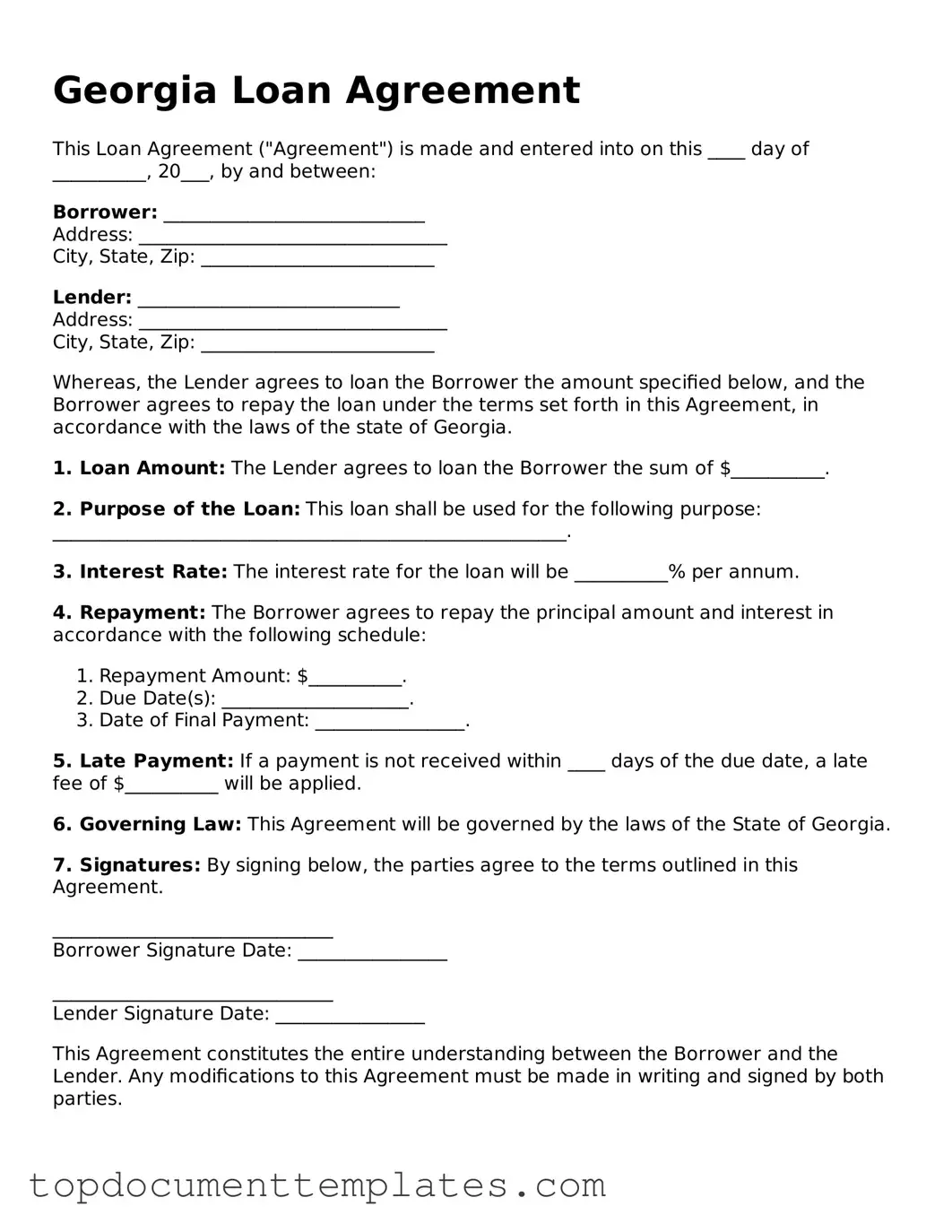Valid Loan Agreement Form for Georgia State
The Georgia Loan Agreement form is a legal document that outlines the terms and conditions of a loan between a lender and a borrower in the state of Georgia. This form helps ensure that both parties understand their rights and obligations throughout the loan process. To get started on your loan agreement, fill out the form by clicking the button below.
Open This Form
